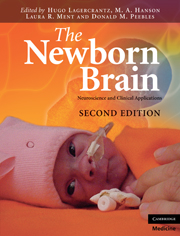Book contents
- Frontmatter
- Contents
- List of contributors
- Preface to the First Edition
- Preface to the Second Edition
- 1 Reflections on the origins of the human brain
- Section 1 Making of the brain
- Section 2 Sensory systems and behavior
- Section 3 Radiological and neurophysiological investigations
- Section 4 Clinical aspects
- Section 5 Follow-up
- Section 6 Consciousness
- Index
- Plate section
Preface to the Second Edition
Published online by Cambridge University Press: 01 March 2011
- Frontmatter
- Contents
- List of contributors
- Preface to the First Edition
- Preface to the Second Edition
- 1 Reflections on the origins of the human brain
- Section 1 Making of the brain
- Section 2 Sensory systems and behavior
- Section 3 Radiological and neurophysiological investigations
- Section 4 Clinical aspects
- Section 5 Follow-up
- Section 6 Consciousness
- Index
- Plate section
Summary
Understanding the development of the human brain and the emergence of consciousness is a fundamental quest, of similar magnitude to the study of the origin of life from inorganic matter. We can talk about a “big bang” of brain development, when hundreds of thousands of new neurons are formed every minute in the fetal brain and up to one million synapses are generated every second in the child's brain. Jean-Pierre Changeux opens this book with a reflection on the origin of the human brain. The main milestones – such as the proliferation and migration of neurons, synaptogenesis, formation of glial cells – are presented in separate chapters by leading authorities in the field. The selection of neuronal pathways and the organization of the neuronal circuits are discussed by Carla Shatz and others. The development of somatosensory, visionary, and auditory modalities are described in detail. There are also separate chapters on neurotrophic agents and neurotransmitters/neuromodulators.
The remainder of the book deals more with clinical matters, while also presenting the basic science necessary to understand these problems. These chapters encompass imaging the brain, biophysical assessment of the brain, hypoxic–ischemic encephalopathy, the vulnerable preterm brain, and infections of the brain. The mechanisms leading to abnormal neuropsychological outcome are also discussed in detail.
In this second edition most of the chapters from the first edition have been completely rewritten in line with modern science and clinical practice. Some new chapters have been added, for example on behavior and the emergence of consciousness.
- Type
- Chapter
- Information
- The Newborn BrainNeuroscience and Clinical Applications, pp. xiii - xivPublisher: Cambridge University PressPrint publication year: 2010



